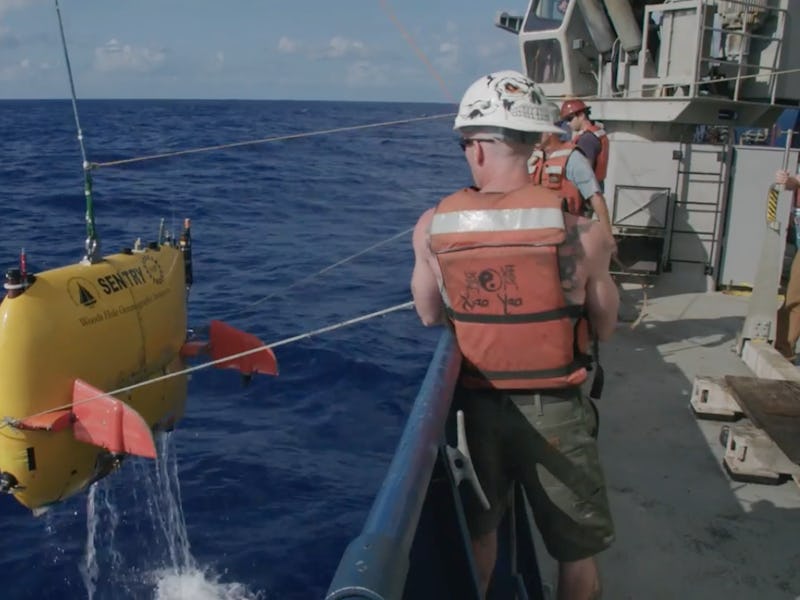NTSB Deep-Dive Sentry Robot Finds the Mysterious El Faro Shipwreck's "Black Box"
The data module could tell us what sank the ship and killed 33 mariners.

On October 1, 2015, the SS El Faro, a 791-foot container ship, sailed into the middle of Hurricane Joaquin and sank, killing all 33 mariners aboard. The ship’s captain, Michael Davidson, had plotted a course from Jacksonville, Florida to San Juan, Puerto Rico, that should have taken El Faro around the worst of the storm, despite the fact that former crew members said the ship was a leaky “rust bucket” that had no place going anywhere near an active hurricane. But shortly after leaving Jacksonville, El Faro went off course and sailed directly into the middle of the storm Joaquin, which battered the ship with 115 mile per hour winds and 40 foot seas. In the midst of the chaos, El Faro suffered some catastrophic accident and went down, sinking 15,000 feet to the bottom of the ocean.
After an exhaustive and fruitless search for survivors, the National Transportation Safety Board launched an investigation into the ship’s sinking. A month later, on October 31, a Navy tugboat found the ship resting upright on the bottom, 41 miles northeast of the Bahamas and 3 miles underwater, with a massive hole in its hull. And that’s where the Sentry came in. The NTSB used the Woods Hole Oceanographic Institution’s deep-sea exploration robot, a bathtub-with-flippers-shaped craft called Sentry, to dive down and investigate. In January, Sentry came back with the first footage of the wreck.
The Sentry brought back photos and video of the ship’s final resting place, but couldn’t find one crucial piece of equipment: the ship’s data recorder, sometimes known as a “black box,” which would contain vital data on why the ship succumbed to the storm. El Faro sank so quickly and violently that none of the crew survived, despite their emergency survival suits, and the ship’s data recorder could contain the essential details. Today, the NTSB announced that Sentry had found the black box, and they had video footage to prove it.
The Sentry has been in service since 2008, and is frequently used to scour deep stretches of the ocean floor for clues during investigations and research.
Autonomous Underwater Vehicles (think drones, but submarines), can “work like bloodhounds,” WHOI engineer Dana Yoerger, one of Sentry’s designers, said in a press release. “When they find something we’re interested in, they can ‘bark’ and then return from the ‘hunt.’”
The Sentry is powered by over 1,000 lithium-ion batteries, and can stay underwater at massive pressures and depths for over 20 hours. Cutting edge AUV models, like Boeing’s new Echo Voyager, might be able to stay underwater for months at a time, sweeping the ocean for everything from shipwrecks and marine life to hostile submarines.
We won’t know the fate of El Faro until the NTSB reviews the black box’s data, but thanks to the Sentry, the families of the lost mariners may have some answers soon.